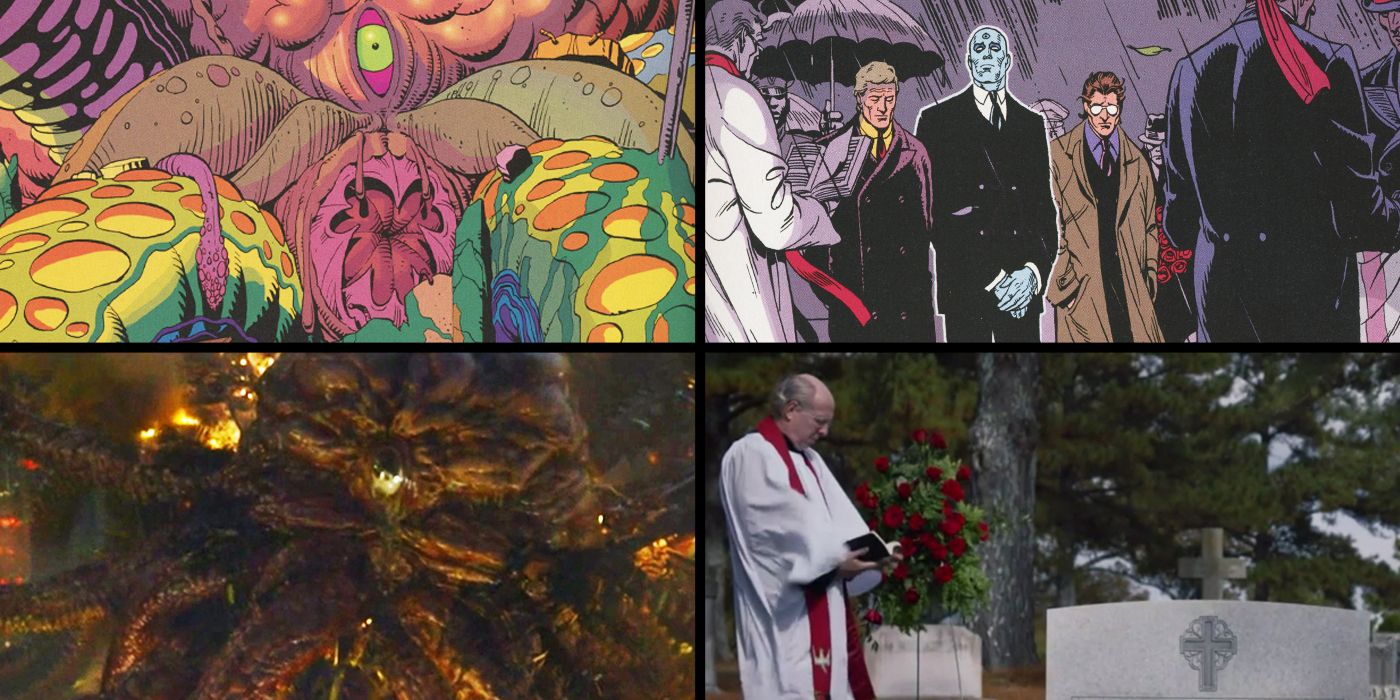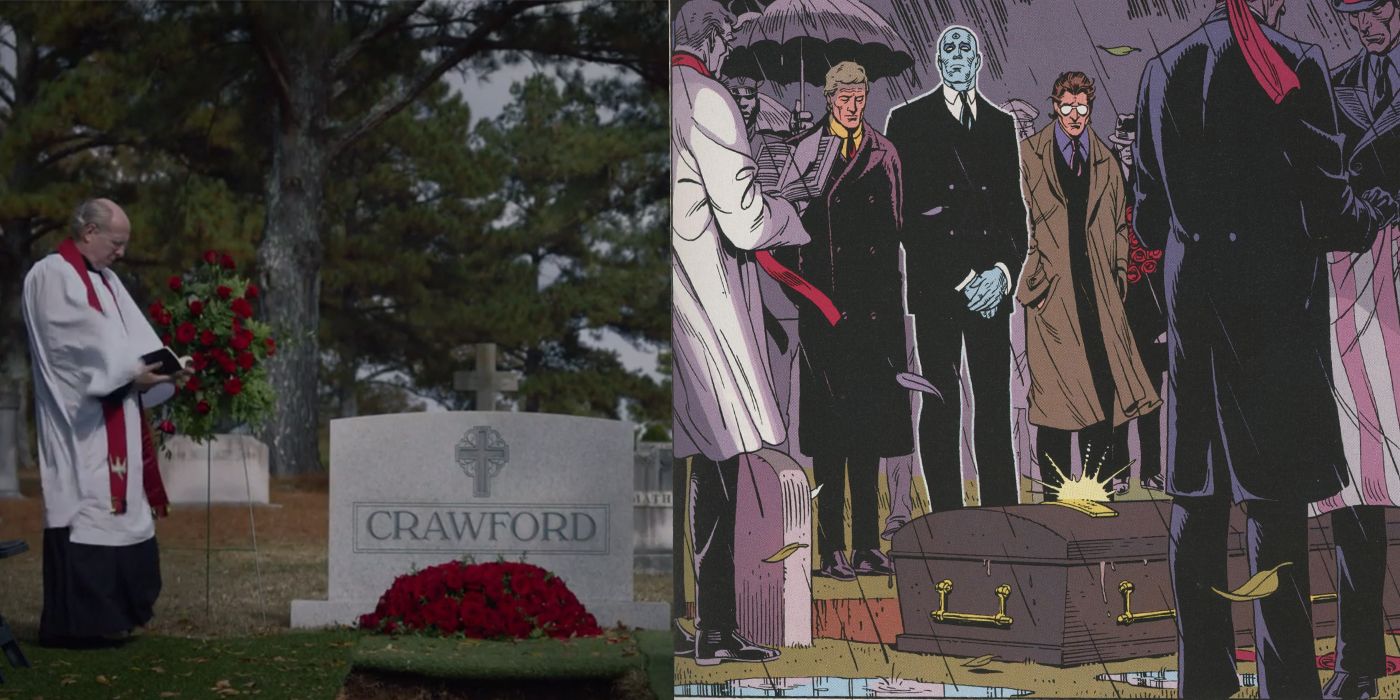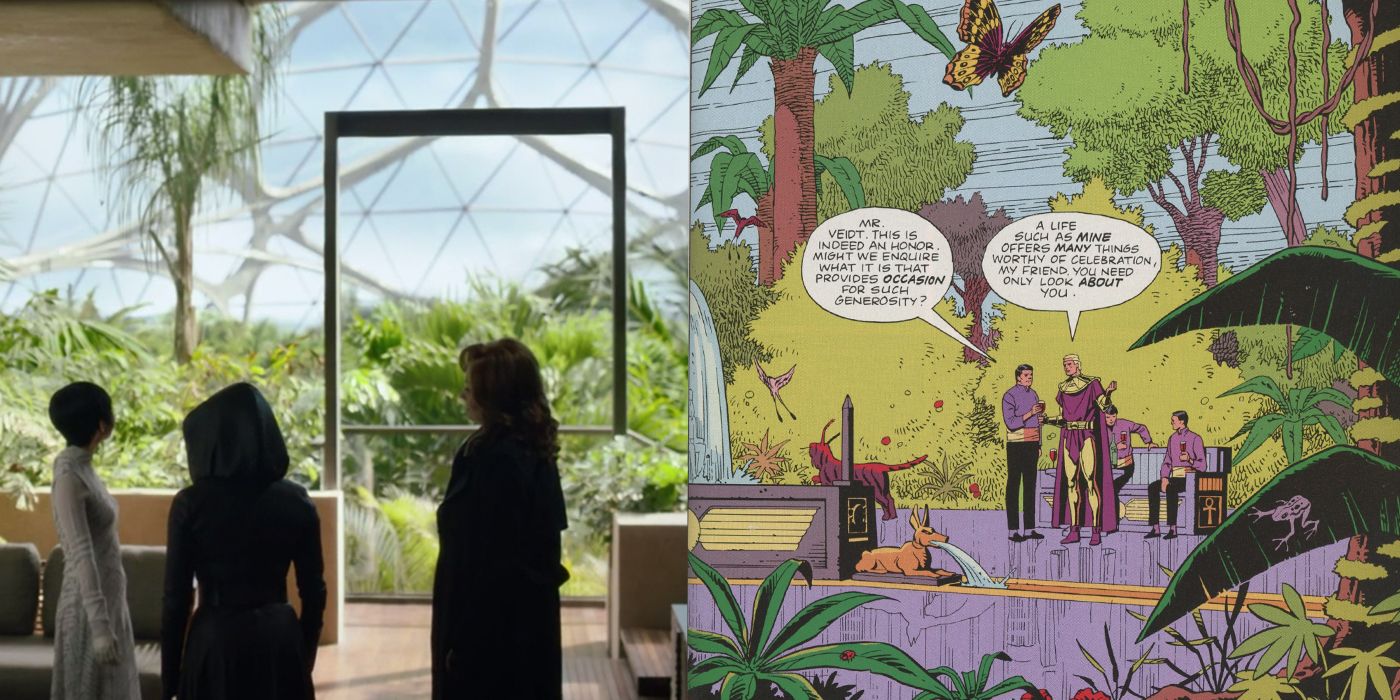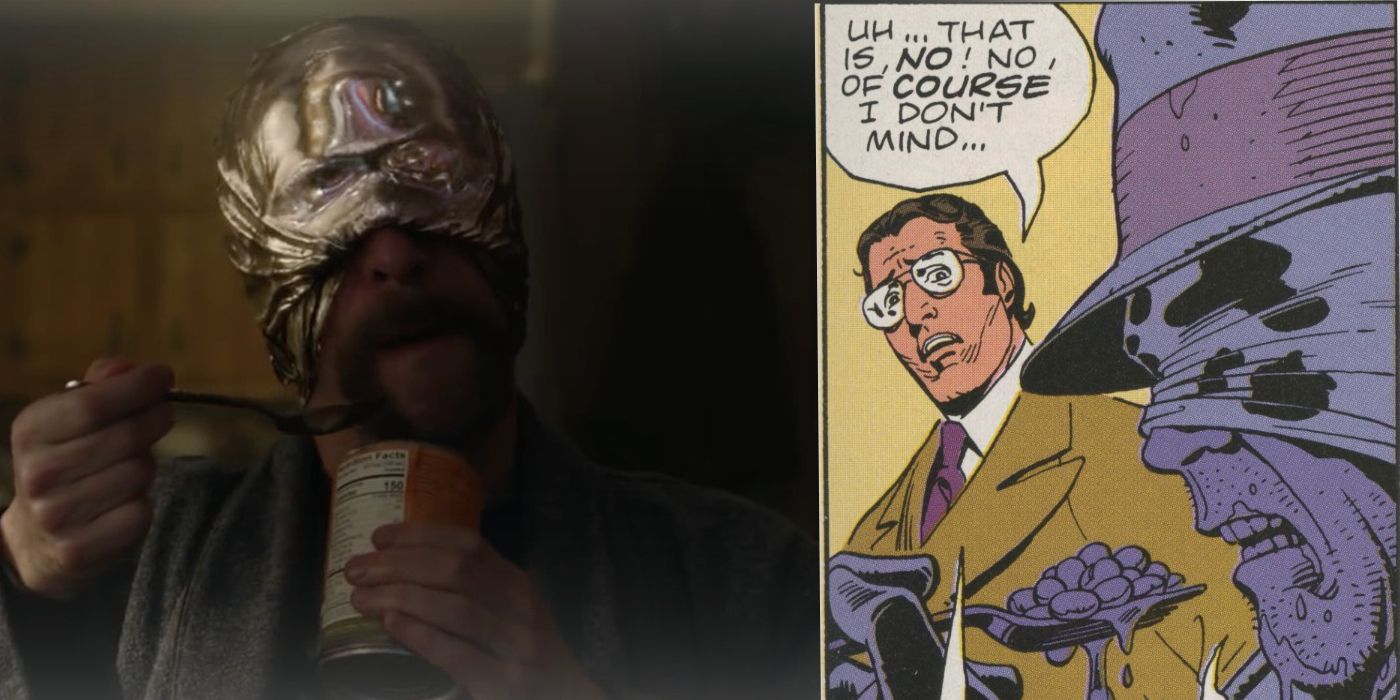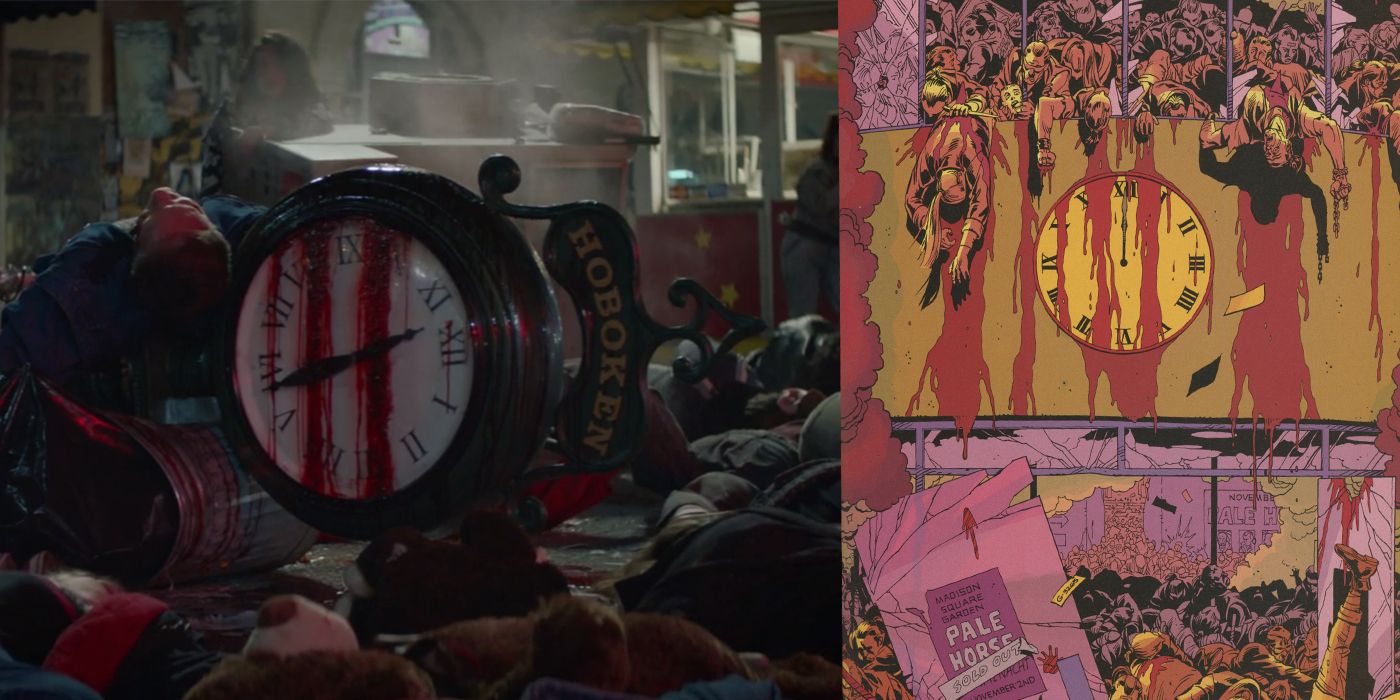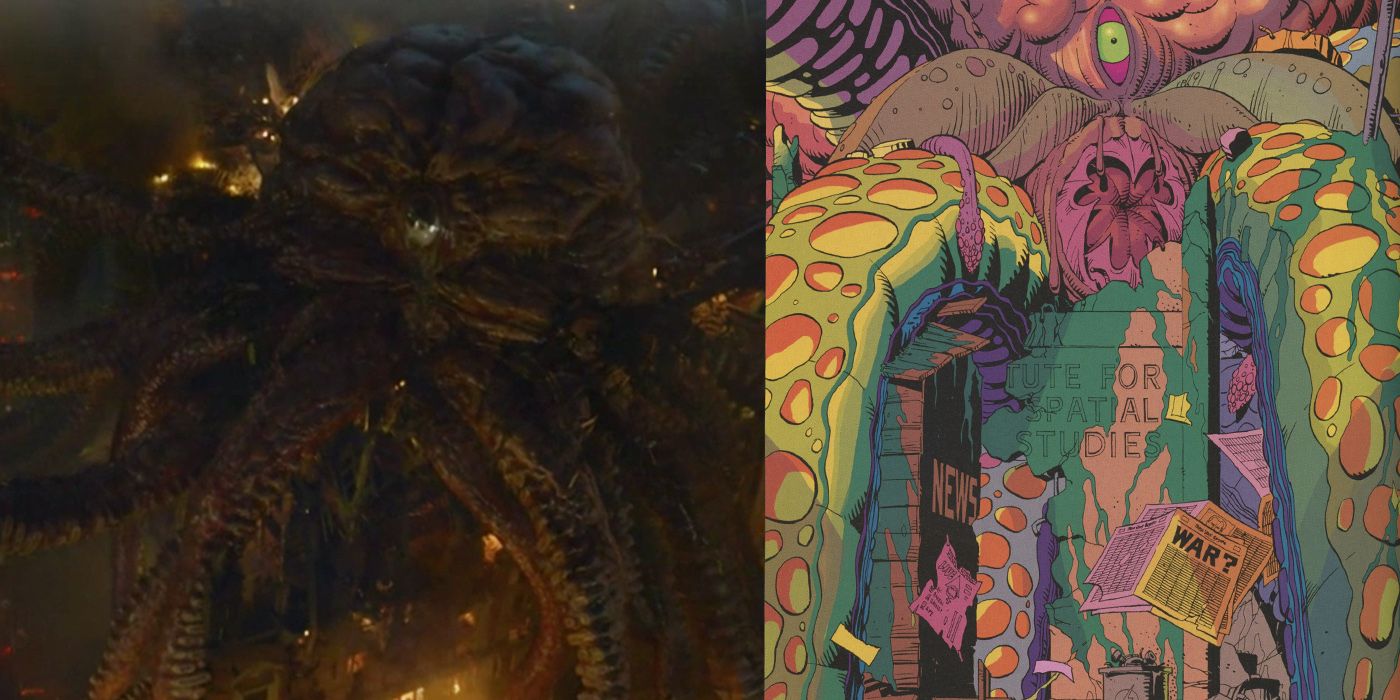HBO’s TV series Watchmen, led by showrunner and devoted fan of the series Damon Lindelof, is set 34 years after the events of Dave Gibbons and Alan Moore's classic DC limited series. Eagle-eyed viewers will note that some of the show's scenes look familiar; this is because episode directors Nicole Kassell, Stephen Williams, Andrij Parekh, and Steph Green have included some of Watchmen’s most iconic images in the HBO adaptation.
Despite Zack Snyder's attempt to remain faithful to the original, his 2009 Watchmen film is criticized for fundamentally misunderstanding its source material in favor of simple recreation. HBO’s version has critics and audiences divided also, but many have agreed that it captures the spirit of the graphic novel.
Related: HBO's Watchmen World & Timeline Changes Explained
The first five episodes have been chock-full of allusions to the original Watchmen, from references to the comic’s most iconic images, to obscure Minutemen Easter eggs for hardcore fans. Several panels from the original have been recreated, in some cases with new characters and events representing aspects from the comic. The following are the best panel recreations so far.
The Funeral
Judd Crawford's funeral, from the Watchmen episode three "She Was Killed by Space Junk", is reminiscent of Eddie Blake's. Blake, who led a double-life as the government's masked vigilante-for-hire the Comedian, is given a military burial in the DC limited series' "Chapter II". Both characters serve a similar function in the overarching narrative: their deaths mark the beginning of the story; they are morally-ambiguous figures leading double lives; and, their funerals are attended by fellow vigilantes.
Director Nicole Kassell celebrated her source material with numerous images in this scene pulled from the pages of the graphic novel. There's the casket, with an American flag draped on top, sitting beside an open grave. There's a brief shot of an angel statue in the graveyard - another detail form Moore's comic. Even the priest's attire and the flower arrangements are the same.
The Vivarium
Adrian Veidt, also known as Ozymandias, is a retired superhero, public figure, and wealthy entrepreneur. Veidt is also the main villain of the graphic novel, responsible for the 1985 squid attack. In the original text, he is confronted about his plans by Nite Owl, Rorschach, Silk Spectre and Doctor Manhattan in his secret Antarctic base – which contains a beautiful vivarium.
In the HBO series, Veidt has disappeared, and his powerful company has been purchased by Trieu Industries. Introduced in episode 4, Lady Trieu is shown to have her own vivarium, similar in structure to Veidt’s. Hers even includes butterflies fluttering around the inside - like the one being chased by Bubastis (above).
Cold Beans
Looking Glass is turning out to be the Rorschach stand-in for HBO's Watchmen. His paranoia, isolation, and most importantly, his trauma, make his contribution to this season similar to fan-favorite masked vigilante. One of Rorshach’s key characteristics is his attachment his mask, which he wears at all times – illustrated through the image of him pulling it up to eat a can of beans, rather than taking it off.
Looking Glass, whose civilian name is Wade Tillman, is also inappropriately attached to his mask, but for different reasons. Tillman is a survivor of the 1985 squid attack, which he was led to believe was the result of “extra-dimensional squids”. The mask’s material, reflectatine, is designed to shield him from Extra Dimensional psychic attacks. Like Rorshach, he eats his beans with the mask rolled up.
The Doomsday Clock
Clocks are one of Watchmen’s most memorable motifs. Every chapter is represented by a clock face, Doctor Manhattan is the son of a watchmaker, and there are clock faces in many panels throughout the graphic novel. The motif is a reference to the real-life Doomsday Clock used by the non-profit Bulletin of the Atomic Scientists to represent how close the world is to global catastrophe – midnight being the point of no return.
Related: Watchmen: Why The Police Wear Masks Revealed
In the graphic novel, the clock finally reaches midnight - not because of a nuclear attack, but because of Veidt’s “Extra-Dimensional Squid”. The carnage of the scene is illustrated with streaks of blood running down the clock face.
In HBO’s Watchmen, we get a similar scene with Tillman’s flashback. Tillman survived the attack because he was in a house of mirrors at the time. When he exits the funfair attraction, he is met with the horrific sight: bodies everywhere, including one slumped over a blood-streaked clock.
The Squid In Manhattan
Ever since it first rained squids, audiences have wondered: does the Watchmen TV show follow the continuity of the graphic novel or the 2009 film? That questioned was definitively answered in episode 5, “Little Fear of Lightning”. The episode shows the direct aftermath of the 1985 attack on New York.
Like in the original Watchmen, the squid is an enormous, hideous creature, with tentacles strewn across city blocks. HBO’s version is darker, but other than that, the two are strikingly similar: a single green eye, a disgusting, mucus-dripping mouth, and slime and carnage everywhere.
More: Watchmen Confirms What Happened To Nite Owl & Silk Spectre After The Comic

